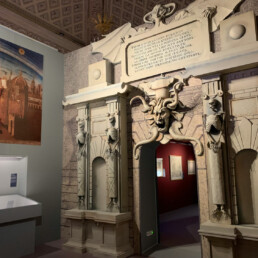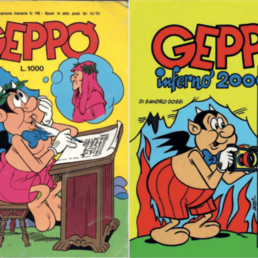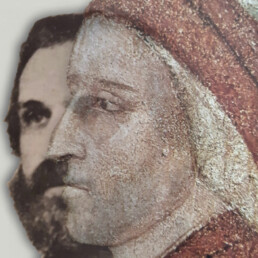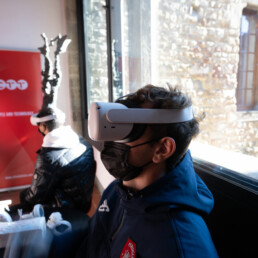“Qual grazia m’è questa”: at the Archaeological Civic Museum and the Collegiate Church of Casole d’Elsa, exhibition of panels by Augusto Bastianini
The exhibition will be inaugurated on July 2 at 6pm and will remain open until January 9, 2022
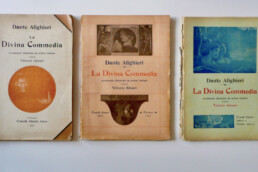
700 years since the death of Dante Alighieri, but also 25 years since the opening of the museum: these are the two important occasions that led to the exhibition “Qual grazia m’è questa: Augusto Bastianini’s panels for the Divine Comedy, newly illustrated by Italian artists. Florence, Fratelli Alinari, 1902 -1903”. The exhibition set up in the rooms of the Archaeological Civic Museum and the Collegiate Church of Casole d’Elsa will be inaugurated on July 2 at 6 pm and will be viewable until January 9, 2022.
The exhibition is curated by Patrizia La Porta, director of the Casole Museum. Bastianini is among the sixty artists who participated in the illustration of the Divine Comedy edited by Vittorio Alinari and published in Florence in 1902-1903. He created four drawings to accompany canto XXIII of Purgatory and canto XVI of Paradise. The exhibition dedicates particular insights to the protagonists encountered by Dante in the two canti: his ancestor Cacciaguida and his friend Forese Donati who upon recognizing the poet exclaims “Qual grazia m’è questa”.
Illustrations by Augusto Bastianini
Augusto Bastianini illustrated two very important canticles, XXIII of Purgatory and XVI of Paradise. The first concerns Dante’s encounter with the poet and friend, Forese, detailing Dante’s surprise and joy upon finding him among the souls in purgatory. The second is the poem dedicated to Dante Cacciaguida’s ancestor. Born in 1875 in the centuries-old castle of Monteguidi di Casole d’Elsa, Augusto Bastianini is still remembered today as one of the most influential artists of the Tuscan pictorial landscape of the late nineteenth and early twentieth centuries, like Antonio Salvetti, a painter from Colle, and Niccolò Cannicci, exponent of the second generation of the Macchiaioli, with whom he built a strong artistic and personal bond.
The Divine Comedy edited by Vittorio Alinari
In May 1900, the photographer Vittorio Alinari organized a competition for Italian artists to create a set of illustrations for a new edition of the Divine Comedy. Each competitor had to send some drawings of at least two canti from Hell, suitable for the graphic reproduction. The drawings were exhibited at the Society of Fine Arts in Florence in June 1901, and Alinari completed the project by subsequently inviting other artists to try their hand at the figurative translation of the canticles of Purgatory and Paradise. After the publication of the Comedy – whose text was edited by Giuseppe Vandelli, on the recommendation of the Dante Society of Florence – the 388 original works he requested from Italian artists remained the property of Vittorio Alinari. The works had served to illustrate the volume and provide a monumental corpus of Italian art of the time.

